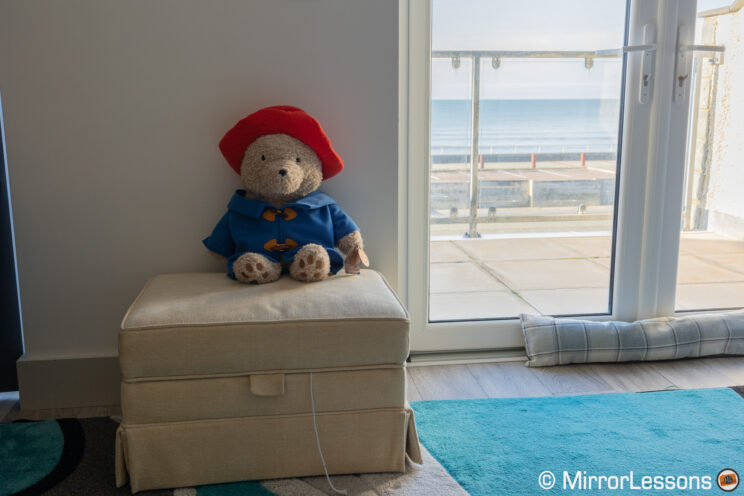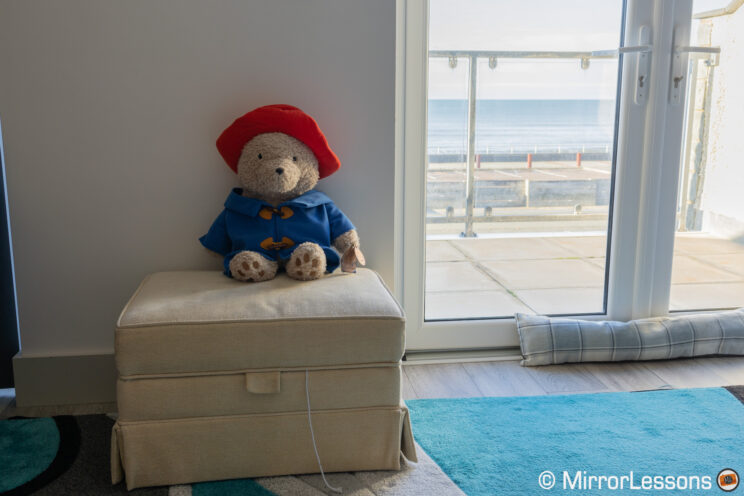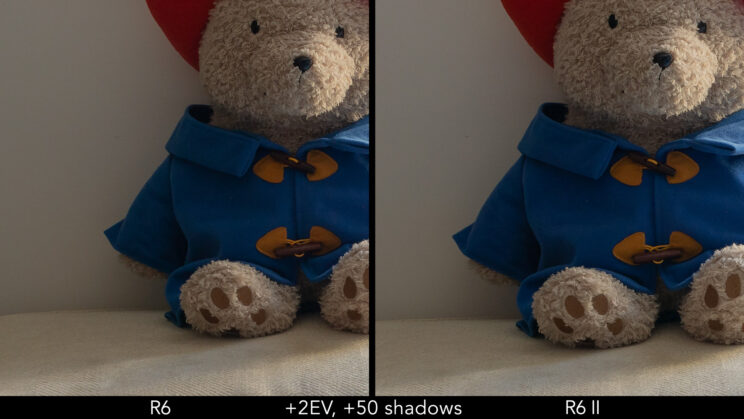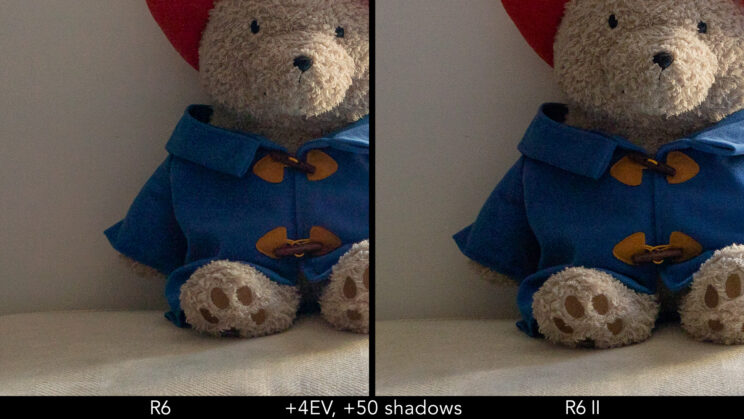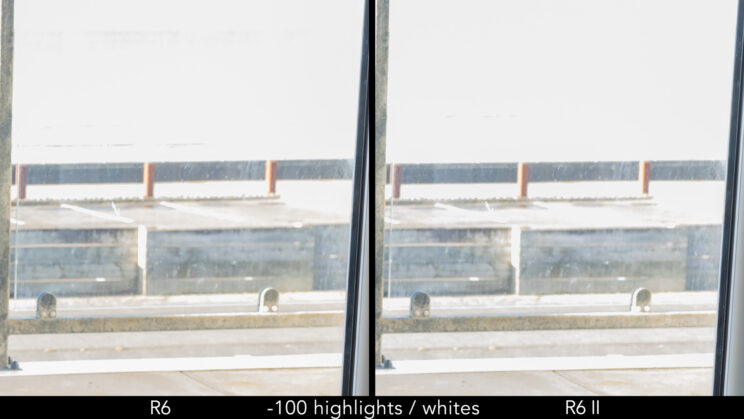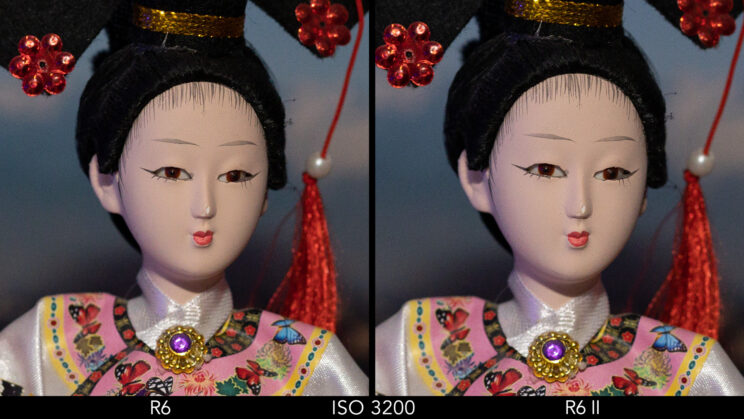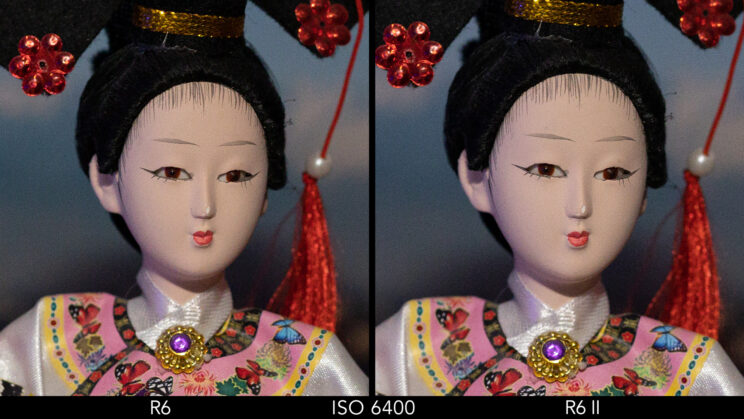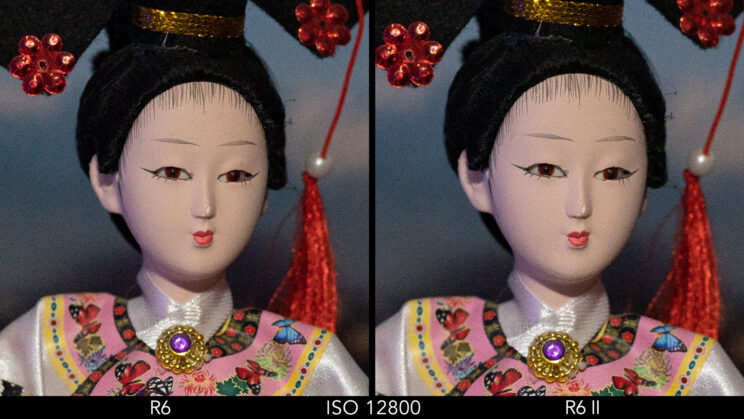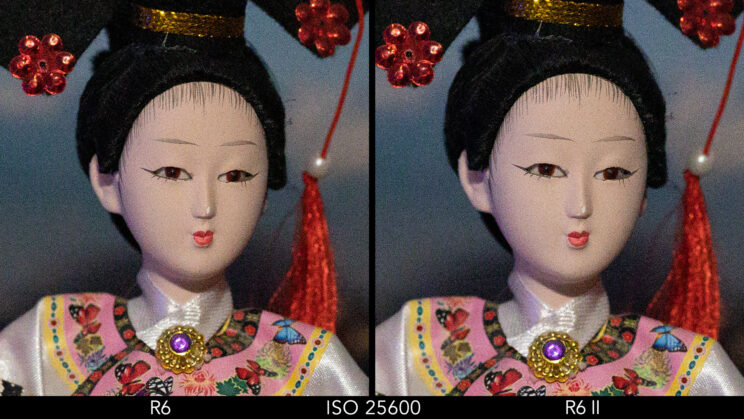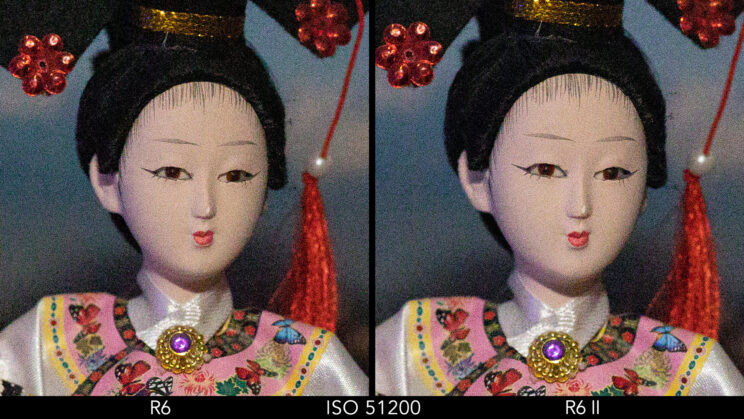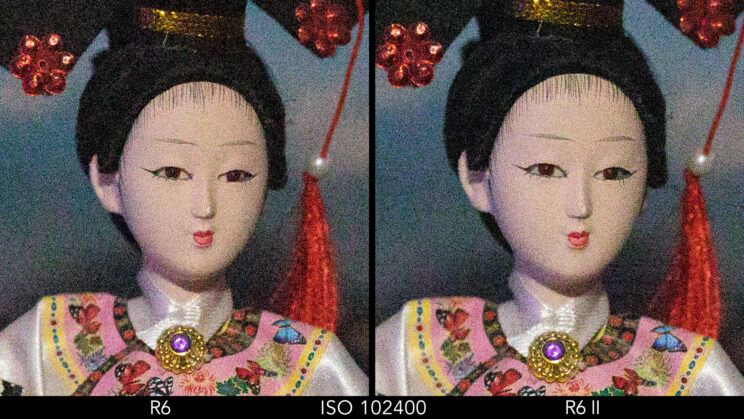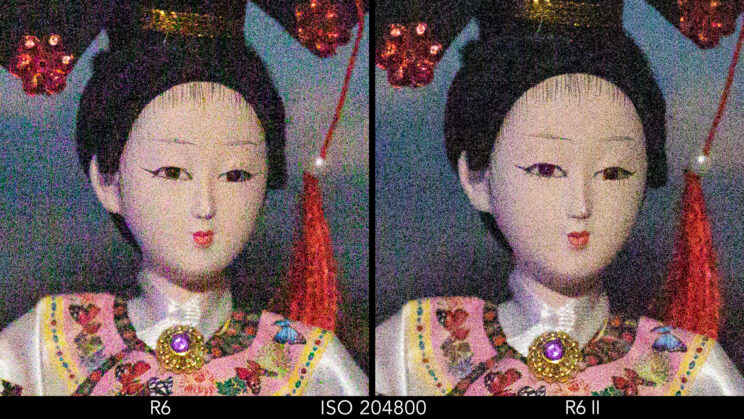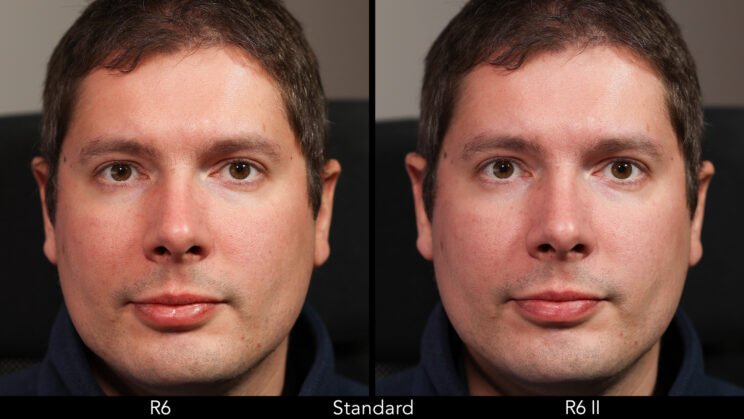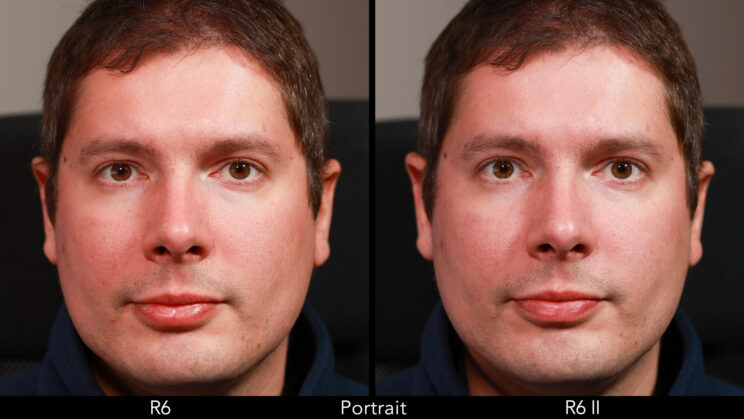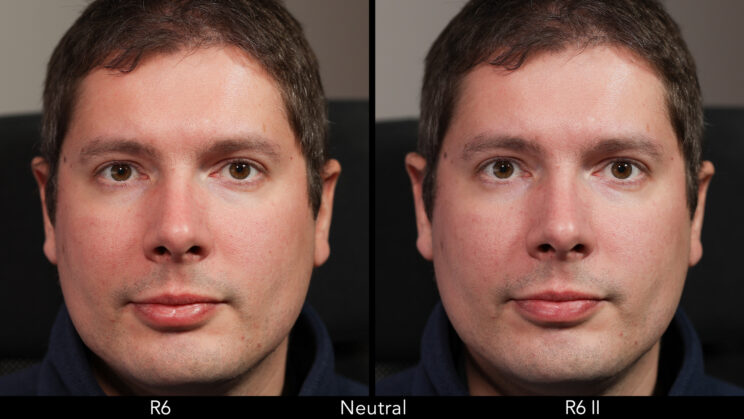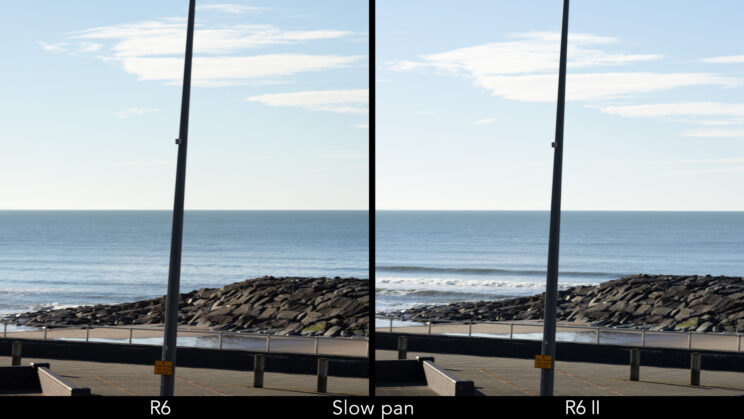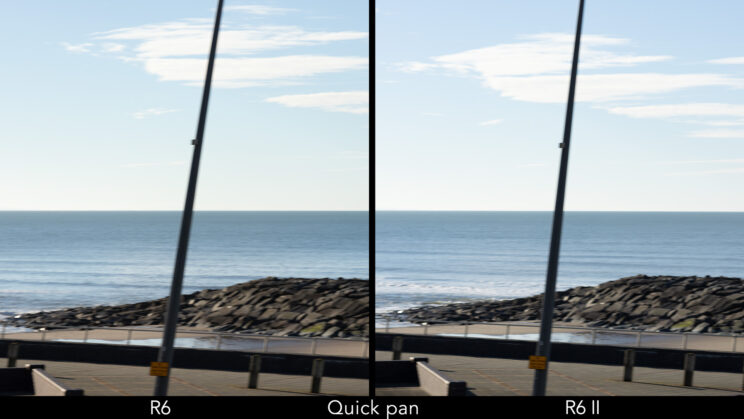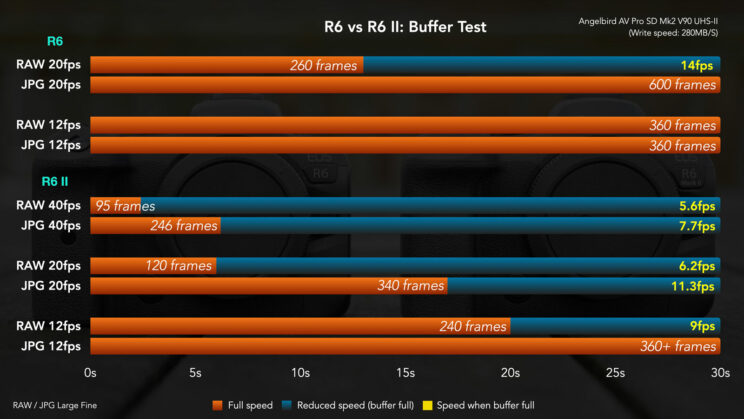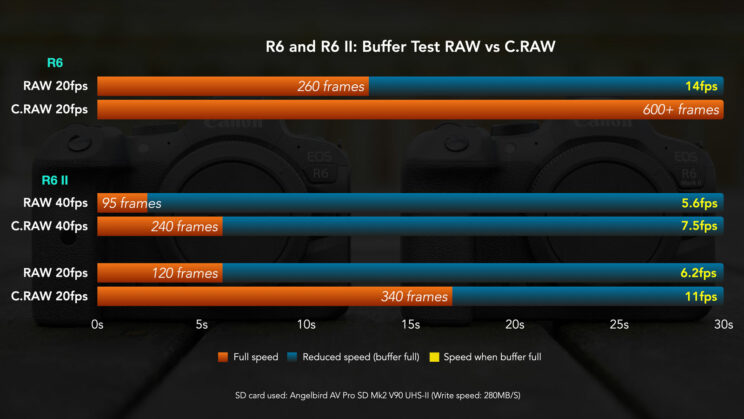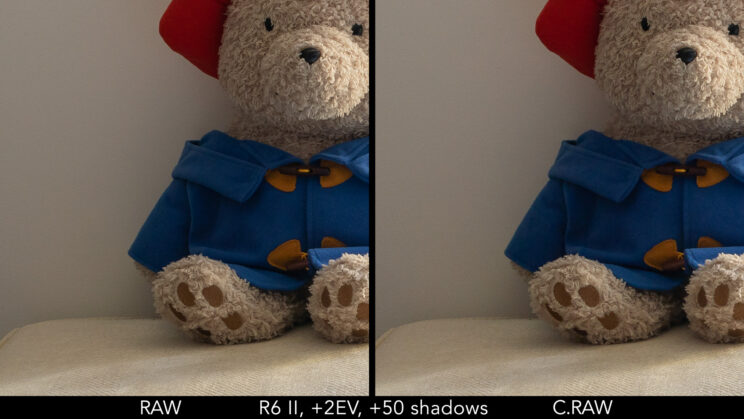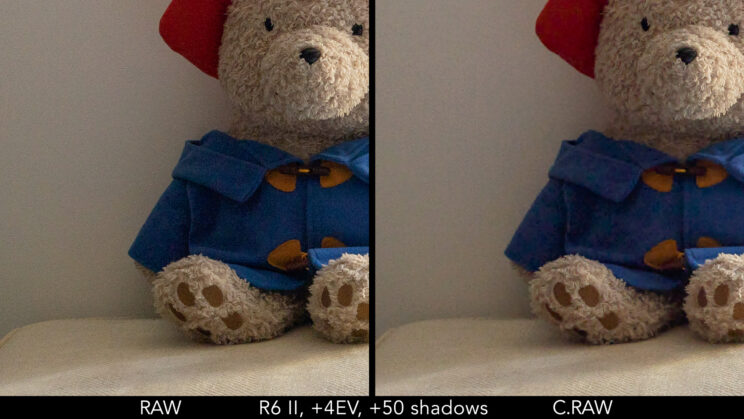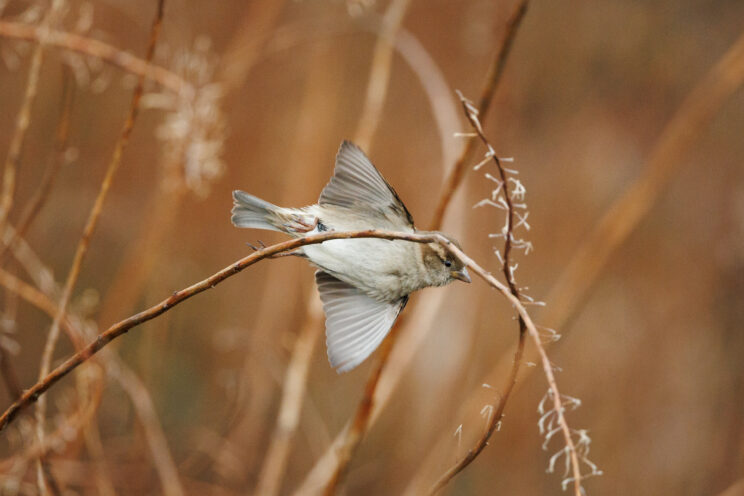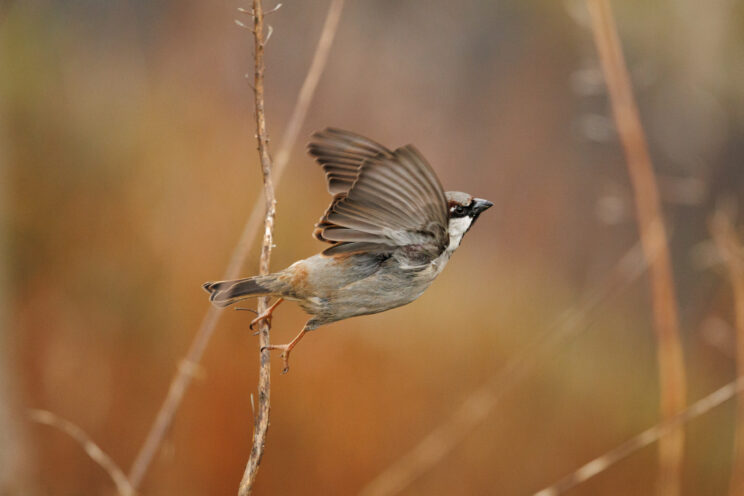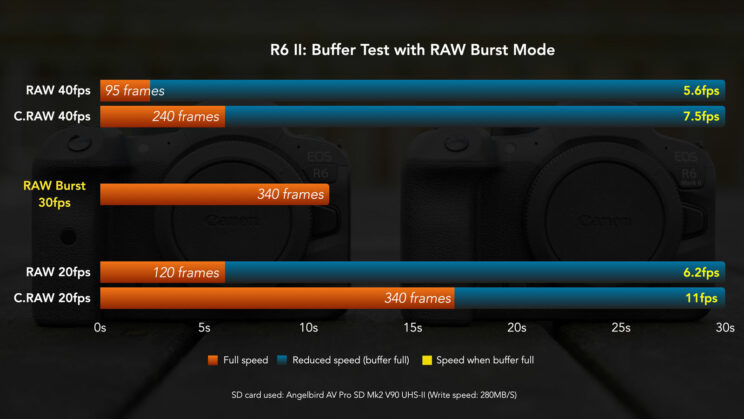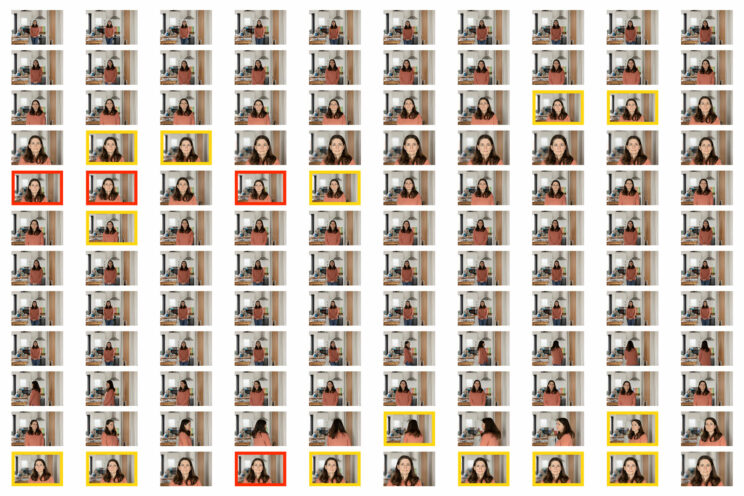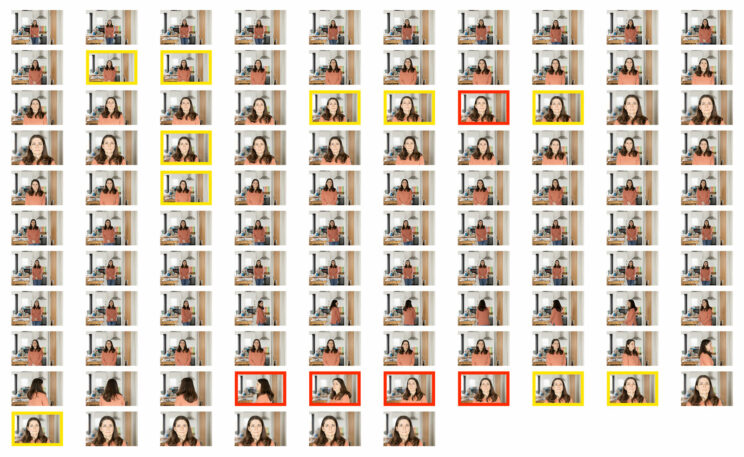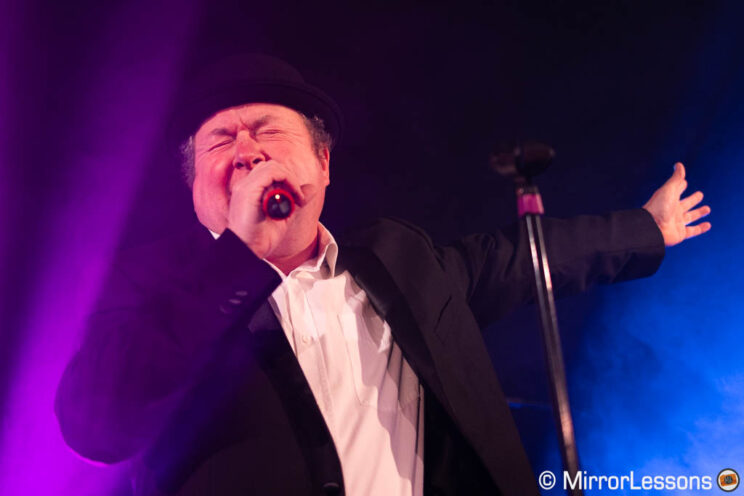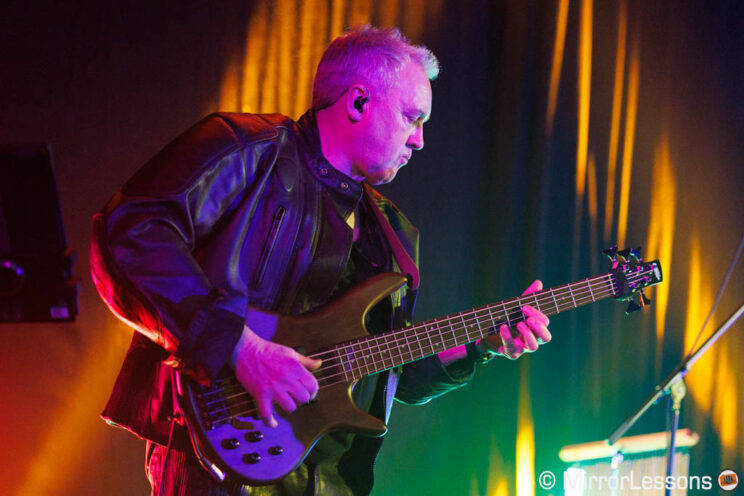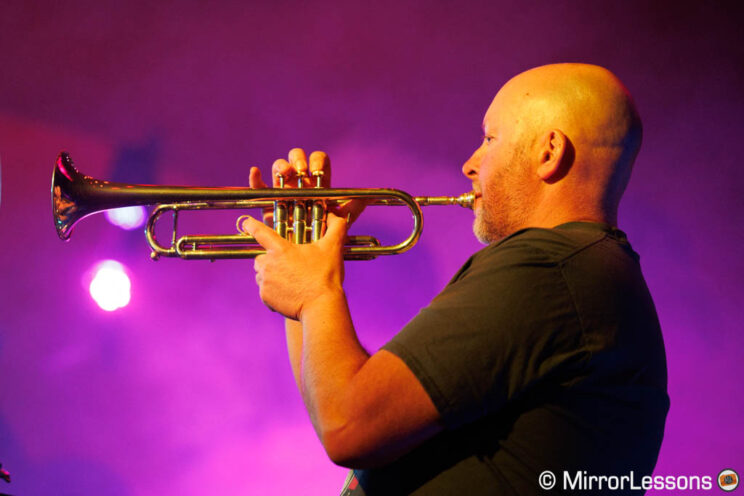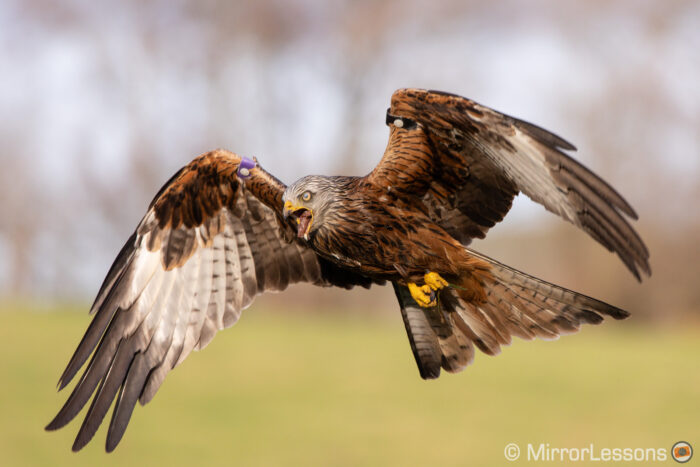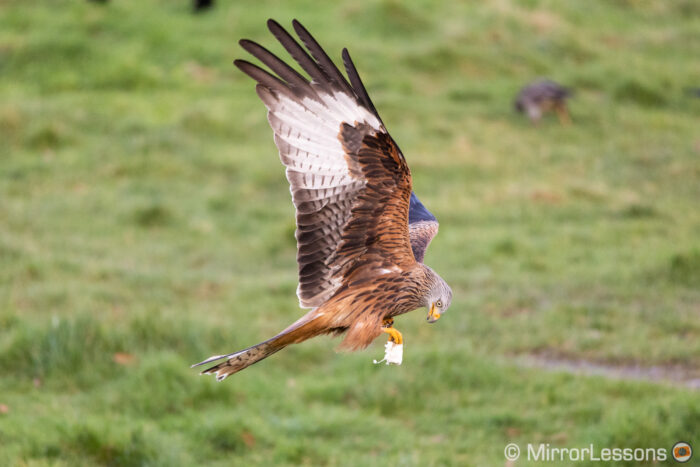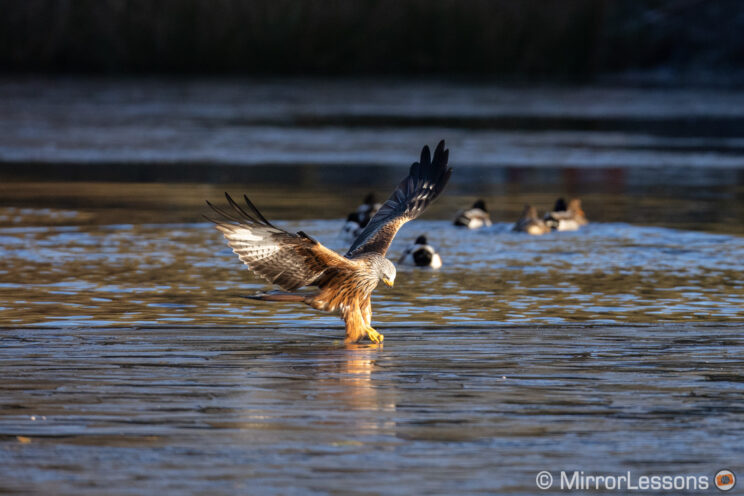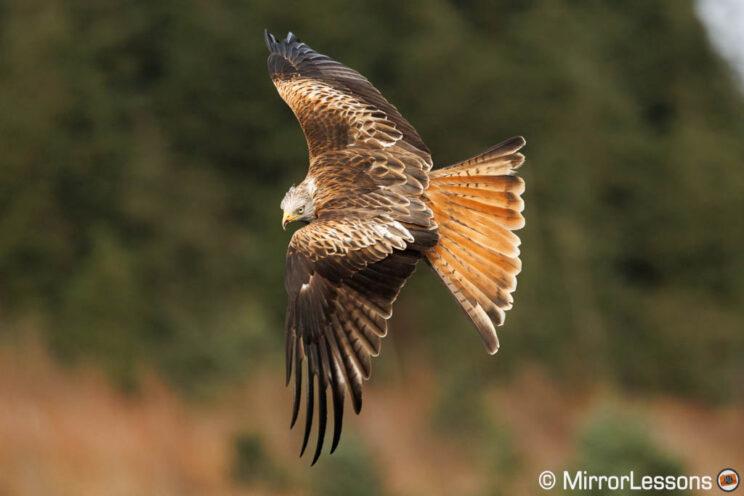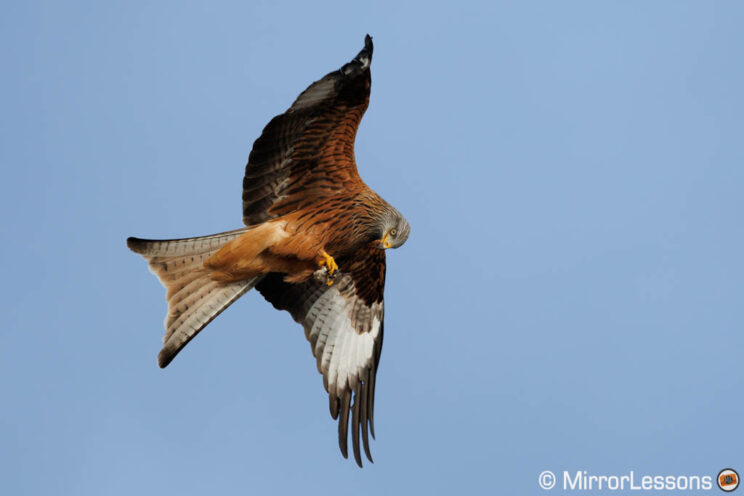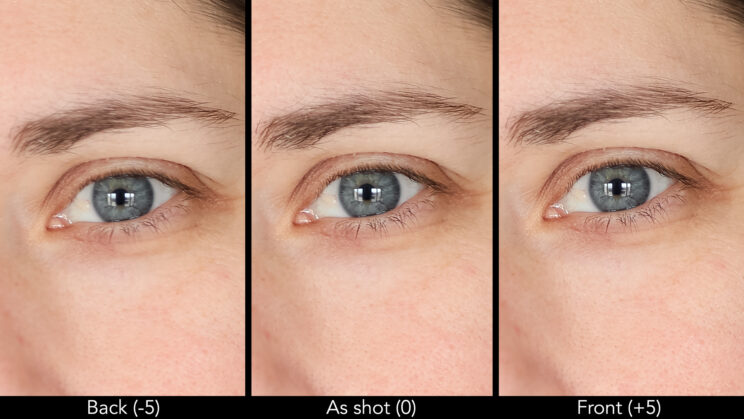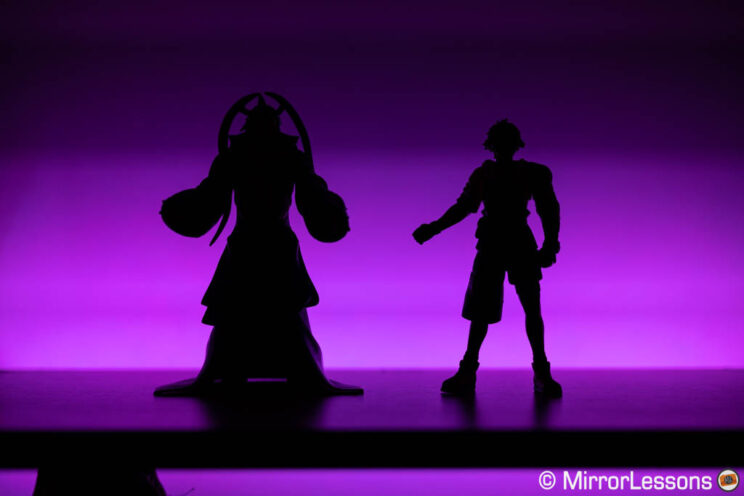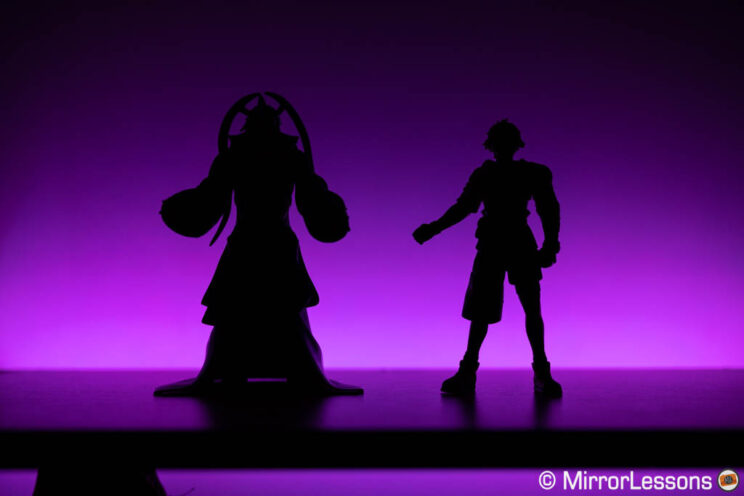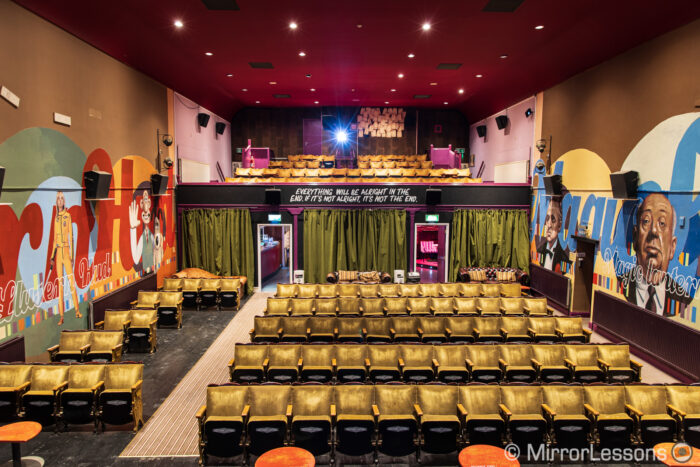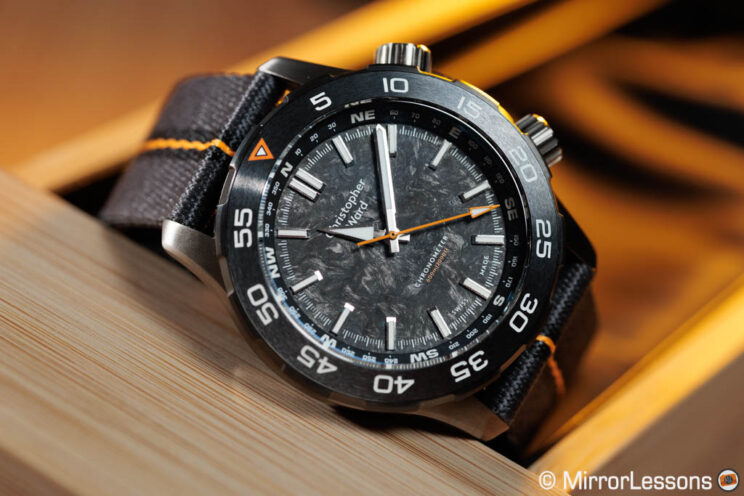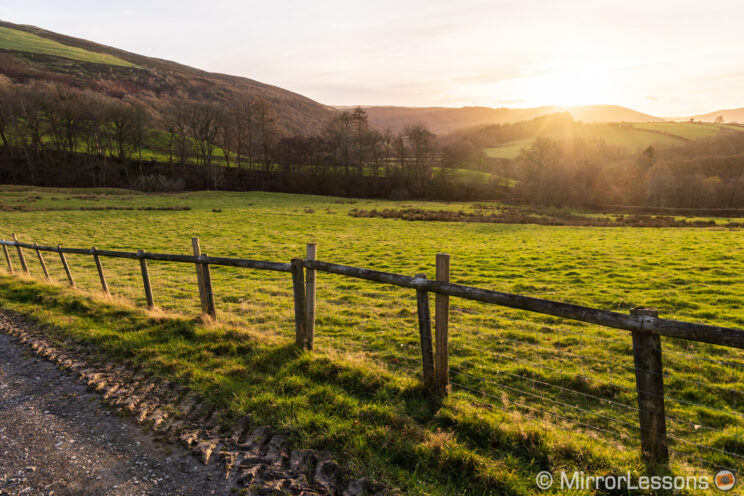It’s been over two years since we’ve seen a change in the Canon EOS R6 line-up. Sure, there was a new Canon EOS R7 and R10, but nothing that can directly replace the R6.
In this comparison guide, we’ll provide you with the top ten differences between the Canon EOS R6 and Canon EOS R6 II to help you make an informed decision on which camera is right for you.
Note: the article has been upgraded and includes real world feedback, side-by-side tests, and more!
The R6 II brings interesting features that can be summarised as follows:
- New 24.2 Megapixel sensor
- New faster 40 frame-per-second continuous mode that’s silent in operation
- Focus subject recognition expanded to include horses, trains and aeroplanes
- 4K video with 6K oversampling and no overheating
- 5GHz Wi-Fi
- Extra features such as Focus Stacking
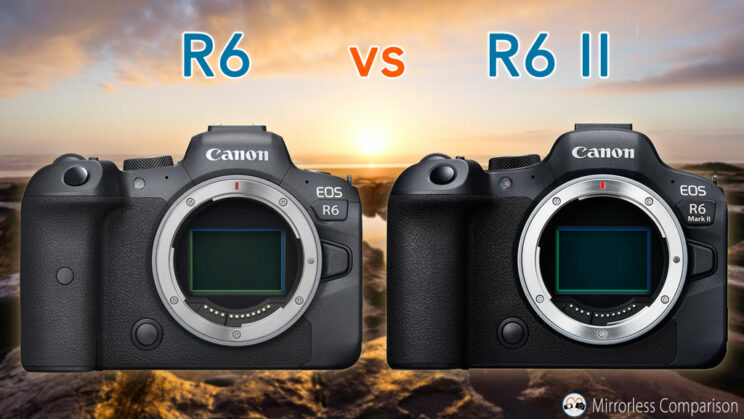
Ethics statement: the following is based on our direct experience with the R6 and the R6 mark II. The initial preview article was co-authored with Leigh Diprose. We were not asked to write anything about this product, nor were we provided any compensation of any kind. Within the article, there are affiliate links. If you buy something after clicking one of these links, we will receive a small commission. To know more about our ethics, you can visit our full disclosure page. Thank you!
Table of Contents
– The 10 Main Differences in a Nutshell
– Main Specs
1. Sensor and Image Quality
2. Body Controls and Design
3. Connectivity
4. Battery Life
5. Continuous Shooting
6. Video Capabilities
7. Autofocus
8. Breathing Compensation and Other Features
9. Image Stabilisation
10. Price
– Things the R6 and R6 II have in common
– Video Review
– Conclusion
The 10 Main Differences in a Nutshell
- Sensor: it’s mainly about the (small) difference in 4MP. Dynamic Range and high ISO are similar.
- Body Controls: a few small changes make the R6 II even better to use, but they are identical for the most part
- Connectivity: faster WiFi and extra USB options for the R6 II (including webcam mode)
- Battery Life: a bit better on the R6 II overall, especially when recording video
- Continuous Shooting: the R6 goes up to 20fps, the R6 II works up to 40fps with less rolling shutter, and it has extra options like the Pre-Shooting mode, but buffer is more limited.
- Video: no more overheating problems with the R6 II, no more recording limitation, less rolling shutter and no sensor crop in 4K 30p and 60p
- Other Features: the R6 II packs extra functionalities including Breathing Compensation, Focus Stacking, High Frequency Anti-Flicker mode, and more
- Autofocus: the R6 II has a more advanced software, and I find the camera better in low light. My birds in flight test shows comparable performance.
- Stabilisation: the R6 is a bit better for stills, but both are on the same level for video
- Price: the R6 II is more expensive
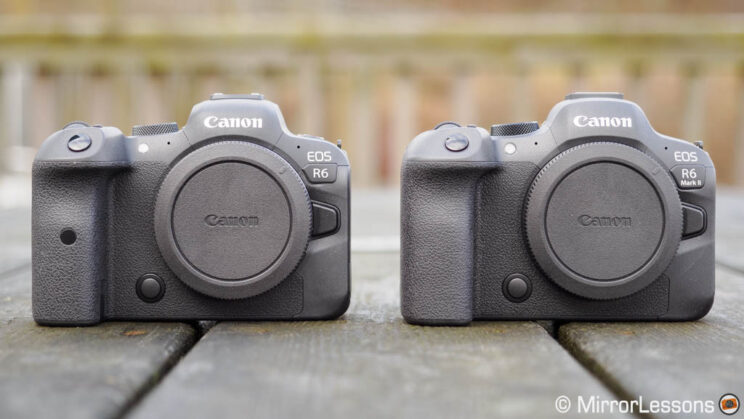
Main Specs
R6
- Sensor: 20.1MP 35mm format CMOS
- Lens system: RF-mount
- Weatherproof: Yes
- Internal Stabilisation: Yes (5-axis)
- Autofocus: Dual Pixel CMOS AF II with 6,072 points
- Continuous shooting: 12fps, or 20fps with e-shutter
- ISO Sensitivity: 100 – 102400 ISO (pull 50, push up to 204800)
- Shutter Speeds: 1/8000s to 30s, Bulb
- Viewfinder: 0.5-in OLED with 3,690k dots, 23mm eye point, 0.76x magnification
- Rear monitor: Multi-angle 3.0″ LCD (1.62M dots) with touch sensitivity
- Movie recording: 4K up to 60fps and 340Mbps, Full HD up to 120fps, 10-bit C-Log/C-Log3 and HDR PQ
- Built-in Flash: No
- Extra Features: WiFi, Bluetooth, Bracketing, Tethering, Time-lapse, Dual SD slots
- Dimensions: 138.4 x 97.5 x 88.4mm
- Weight: 680g (including battery and memory card)
- Firmware version: 1.7.0
- Release: 2020
R6 II
- Sensor: 24.2MP 35mm format CMOS
- Lens system: RF-mount
- Weatherproof: Yes
- Internal Stabilisation: Yes (5-axis)
- Autofocus: Dual Pixel CMOS AF II with 4,897 points
- Continuous shooting: 12fps, or 40fps with e-shutter
- ISO Sensitivity: 100 – 102400 ISO (pull 50, push up to 204800)
- Shutter Speeds: 1/8000s to 30s, Bulb, 1/16,000s with e-shutter
- Viewfinder: 0.5-in OLED with 3,690k dots, 23mm eye point, 0.76x magnification
- Rear monitor: Multi-angle 3.0″ LCD (1.62M dots) with touch sensitivity
- Movie recording: 4K up to 60fps and 340Mbps, Full HD up to 180fps, 10-bit C-Log3 and HDR PQ, Unlimited recording
- Built-in Flash: No
- Extra Features: WiFi, Bluetooth, Focus Stacking, Tethering, Time-lapse, Dual SD slots
- Dimensions: 138.4 x 97.5 x 88.4mm
- Weight: 670g (including battery and memory card)
- Firmware version: 1.1.1
- Release: 2022
1. Sensor Design and Image Quality
The Canon EOS R6 has been a brilliant camera for still images over the years. Its 20 megapixel sensor gave me very good results in the multiple side-by-side comparisons made on this site.
That said, more than one person felt a bit disappointed by the low resolution, at a time when 24 megapixels was the minimum standard expected in a prosumer camera of this kind. So it makes sense that a new full-frame sensor found its way into the EOS R6 II, boasting a more competitive 24.2MP.
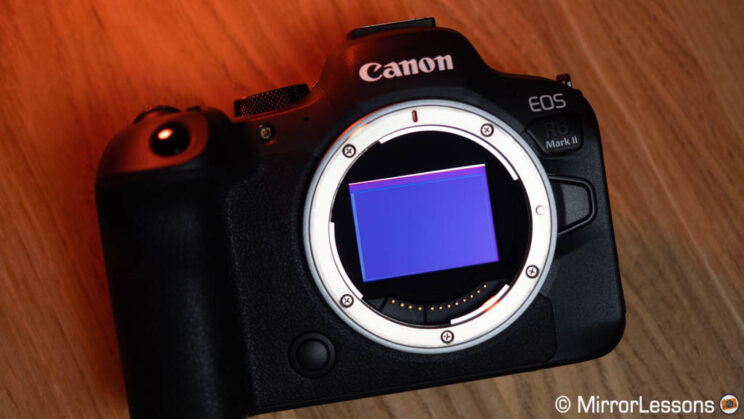
Note that this sensor is not the same as the flagship R3: it is not stacked, and doesn’t have a BSI structure either.
After testing these two cameras side by side, I can say without a doubt that you won’t get a relevant gain in image quality by choosing the R6 mark II over the R6 mark 1, apart from the obvious increment in megapixels (which, to be fair, is small).
If we look at dynamic range, both cameras are capable of preserving a very good amount of detail in the shadows and highlights.
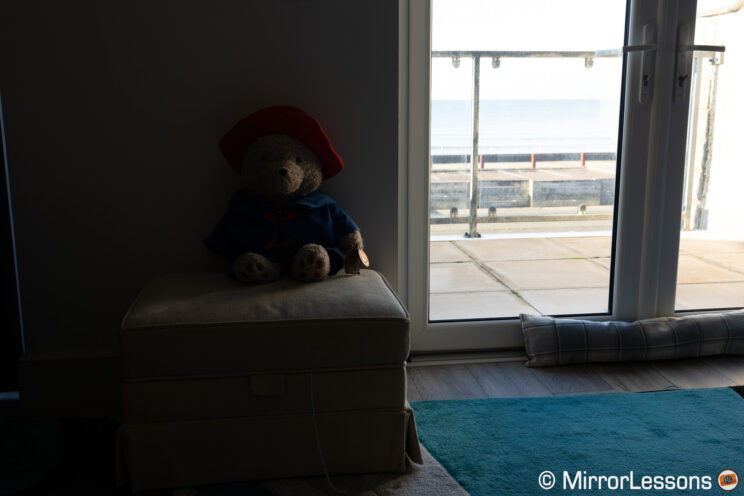
If I push the test to the extreme, the original R6 displays a bit of extra noise in the dark areas (on the blue coat and next to the paw of the stuffed toy), but it’s such a small difference that it will hardly be relevant in your daily work.
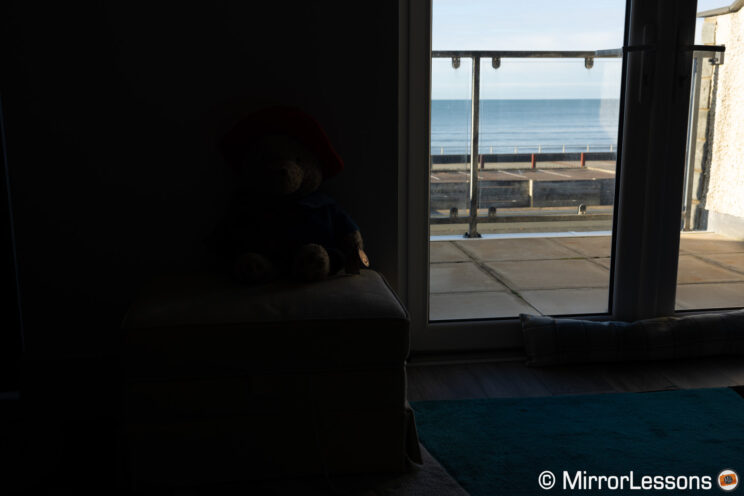
Likewise, with a more difficult highlight recovery, the R6 mk1 saves a bit more information from the parking lot and the sea in the background but, once again, the distinction is too small to be worth thinking about.
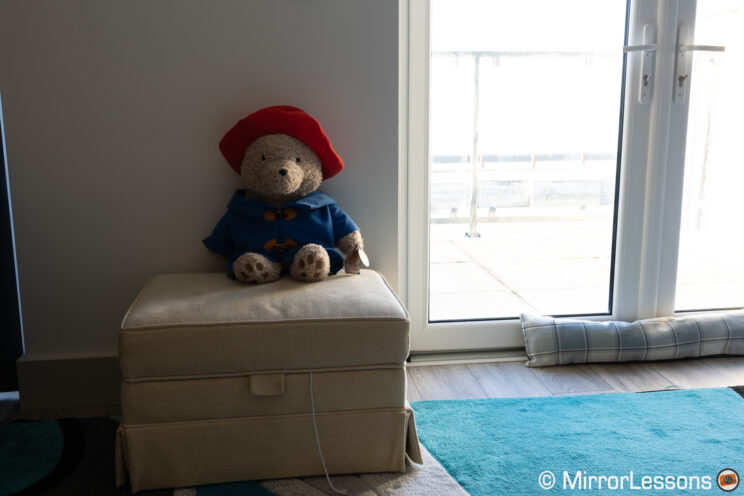
The ISO range remains the same on both cameras: 100 to 102,400 with the normal values, or 50 to 204,800 with the extended values.
Here as well there are no surprises: the amount of noise generated, as you increase the level, is very similar. Noise on the R6 II images appears slightly more uniform and smooth by a very small amount.
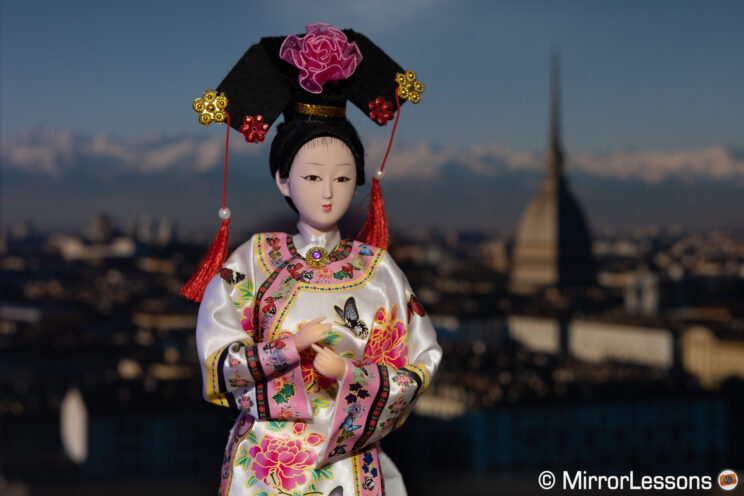
The two cameras use the same DIGIC X processor. I was curious to see if Canon made some changes to the picture styles and, indeed, my skin tone test revealed something. The R6 II image looks a bit cooler with more magenta, in comparison to the original R6.
The Portrait style is very red dominant, but here as well the R6 mark II has more magenta tones.
The Neutral style softens the contrast and produces a more natural looking image to my eyes, but the same disparity described above remains.
2. Body Controls and Design
Comparing the cameras side-by-side, there’s not a lot of noticeable change when observing these two weather-sealed bodies.
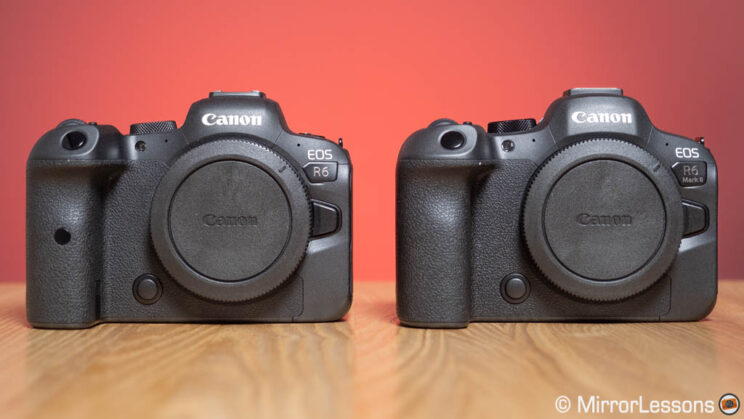
The R6 II feels like it’s been on a very small diet, even with a memory card and battery installed, losing 10g compared to the 680g weight of the Canon R6. Despite this, the cameras have the same dimensions.
- R6: 138.4 × 97.5 × 88.4mm, 680g
- R6 II: 138.4 × 98.4 × 88.4mm, 670g
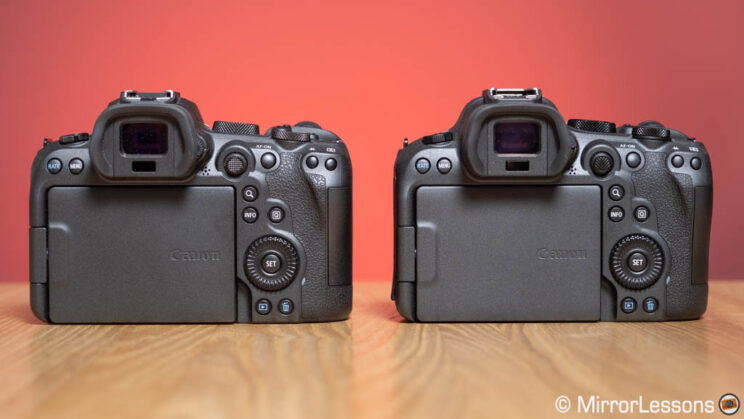
The functionality of the body design differs slightly with a reworked AF-joystick. Canon got rid of the four sharp edges and made the surface more convex. But, to be honest, I find the R6 mark 1 version a bit easier to grab.
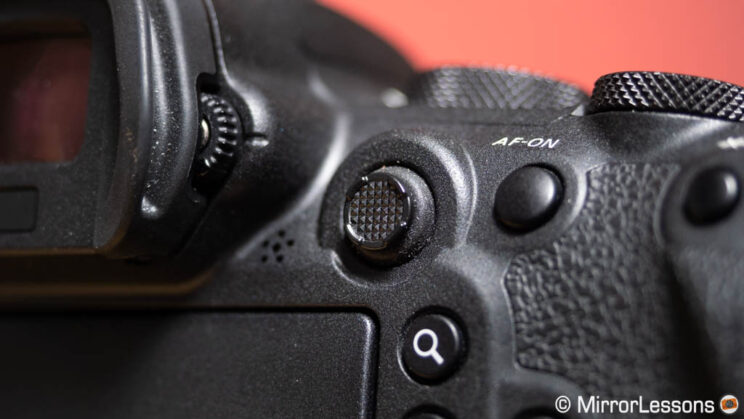
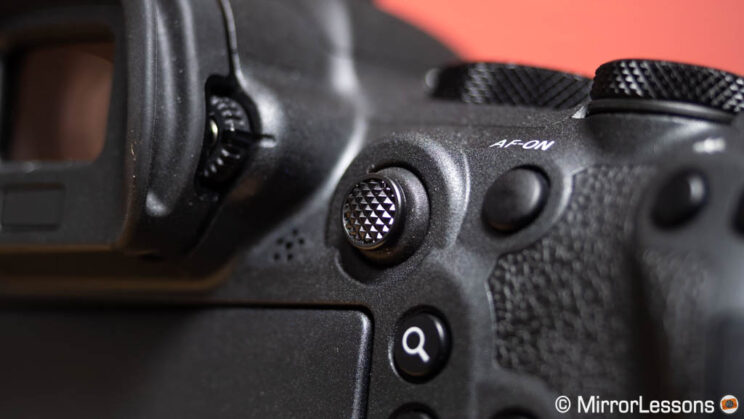
On the top plate, the on/off switch on the R6 II has been moved to the right, around the rear dial, with the addition of a LOCK step in the middle.
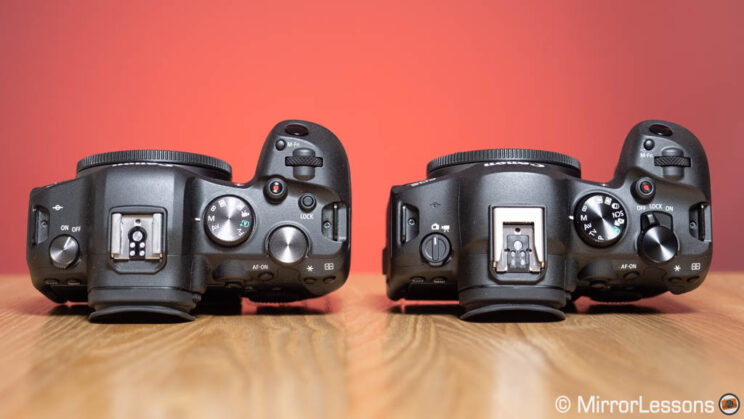
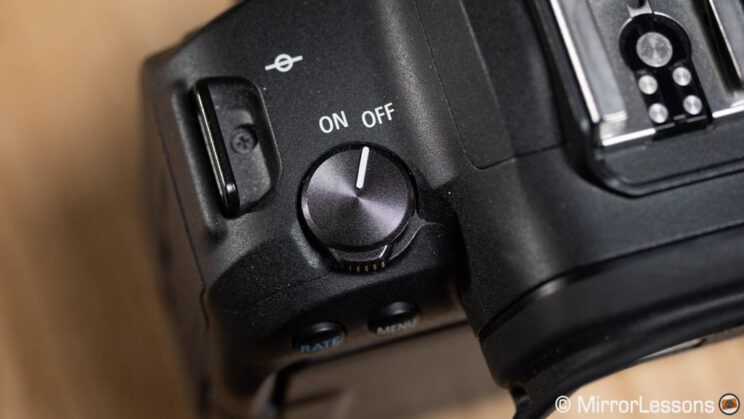
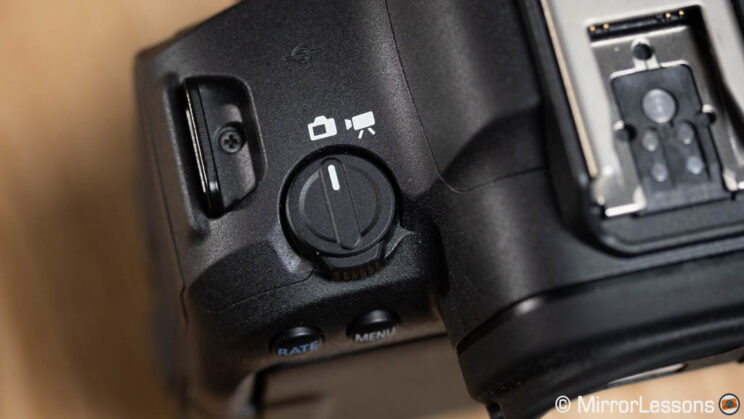
On the left, what was previously the on/off dial on the R6 has been re-configured to quickly switch between photo and video modes on the new camera. This is a good addition because it means you can use the main shooting dial to switch between exposure modes (M, AV, Tv), or use one of the three Custom modes (C1-C3) for video and not just photos. On the original R6, the Custom modes work for stills only.
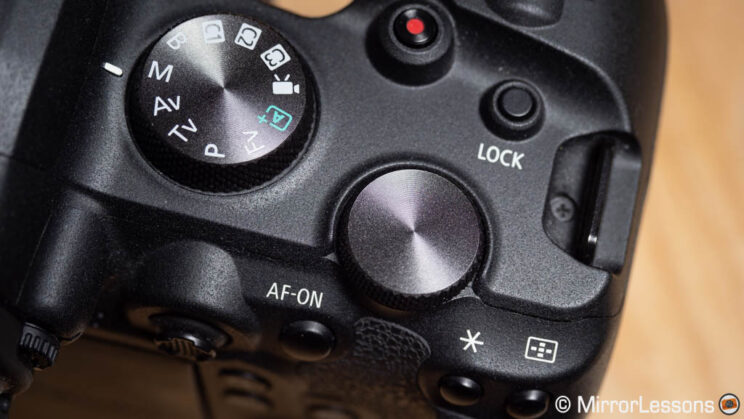
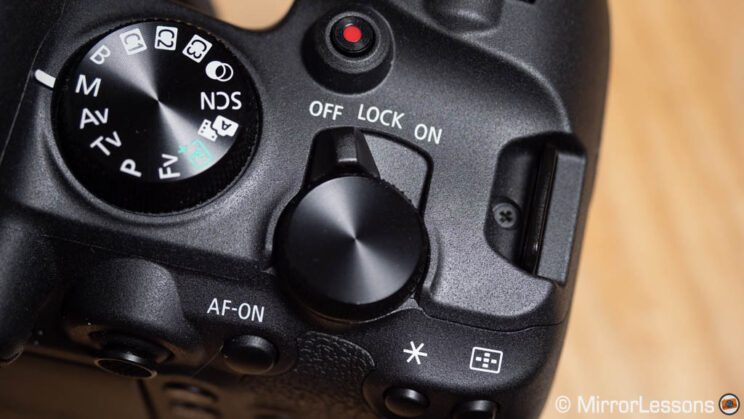
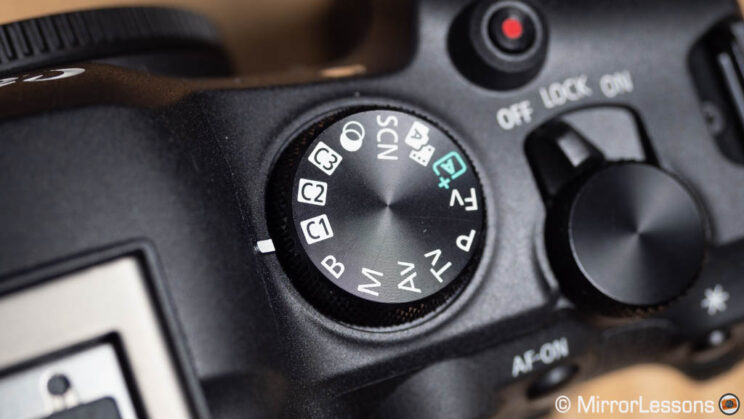
As for everything else, the two cameras are identical, which means excellent ergonomics and grip, responsive and comfortable buttons, and precise dials. Only the rear wheel is a bit less smooth and noisier on the new camera (at least on the sample I rented).
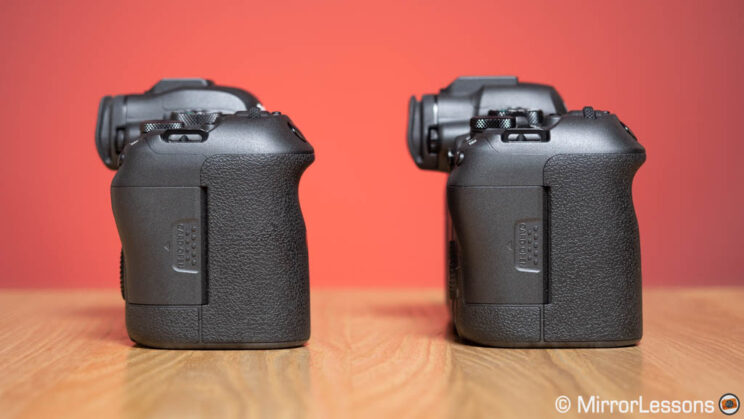
The R6 and R6 II have seven custom buttons that can be re-mapped, plus the function ring on the RF lenses.
The menu system is the same and include the My Menu section that can be configured to your liking. On the R6 II, you can also edit the Quick menu.
3. Connectivity
You’ll notice the R6 II accommodates a new multi-function shoe, which has been carefully designed to work with the EL-5 Speedlight, announced at the same time as the new camera (firmware 1.1.1 required). Unfortunately, it looks like the new flash is not compatible with the EOS R6.
The multi-function shoe also provides support for the Canon DM-E1D digital microphone as well as compatible XLR adapters that transmit digital audio, which means you can work without connecting a wire to the side of the camera, unlike with the original R6.
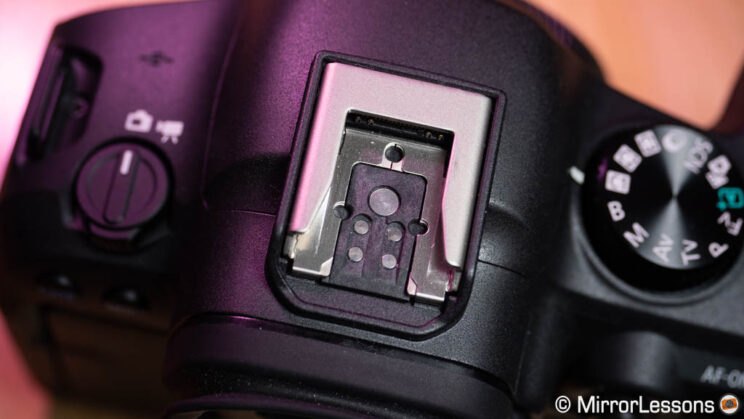
In terms of wireless connectivity, there’s an improvement on the mark II model. Now, with the support of 5GHz Wi-fi (IEEE 802.11ac equivalent), the camera can transfer files much faster to compatible devices (the R6 works at 2.4GHz). Additionally, Bluetooth has been upgraded to version 5.
The physical connections are the same and include:
- 3.5mm microphone input
- 3.5mm headphone output
- 2.5mm remote input
- Micro HDMI output
- USB Type C port (10gbps)

Some interesting options have been added when using the USB port. The new camera can become a plug-and-play webcam (Full HD 30p max.) without the need for extra plugins.
Another interesting option is that you can connect your smartphone to the R6 II with a USB cable, and use the Android/iOS app to transfer images or control the camera without the (annoying) steps required when using Wi-Fi. USB also means less battery consumption, as well as a faster and more stable connection.
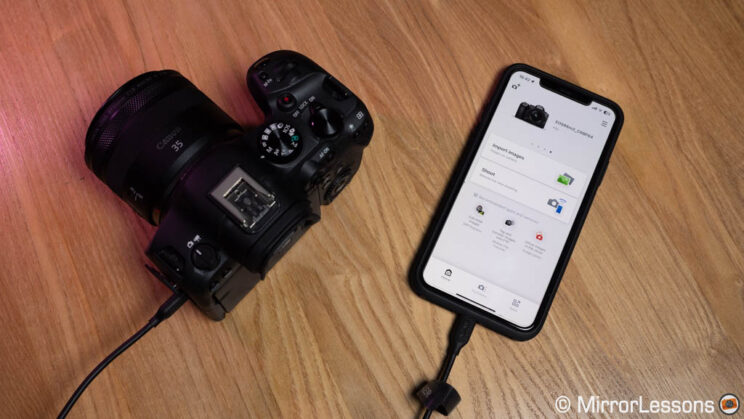
One caveat for iPhone users: the lightning to USB cable that comes with your Apple device doesn’t work. Canon recommends the Anker 514 lightning to USB-C cable, which is the one I used, but be aware it doesn’t work for charging.
4. Battery Life
The two cameras are compatible with the same LP-E6 batteries and BG-R10 battery grip.
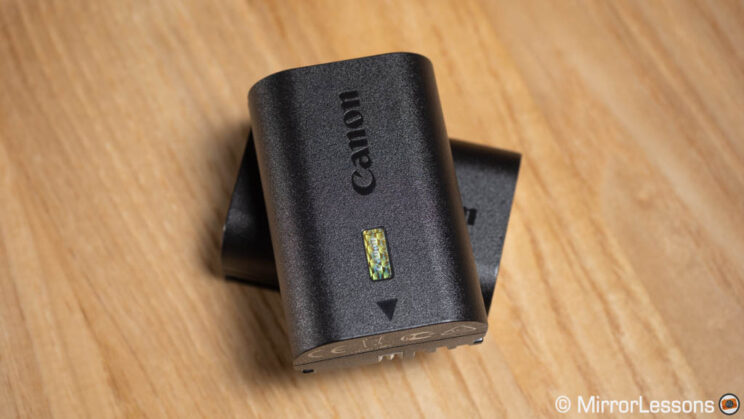
Surprisingly, Canon has managed to increase the battery life on the R6 II. It has a CIPA rating of 760 frames (power saving mode), or 580 frames in normal mode. By comparison, the R6 does 510 and 360 images respectively.
As always, these ratings don’t represent real world shooting, but can give you a rough indication of performance.
For photos, I had similar results. For example, taking 2,600+ images of birds in flight drains the battery by approximately 40% on the mark 1 model. The R6 II does a bit better, with about 35% of power used with a similar count.
For video, the R6 mk1 can manage roughly 113 minutes in 4K 25p (four clips) with a full charge. The R6 II can do 135 minutes with the same settings (Manual Focus, stabilisation off), so that’s 22 minutes of extra footage.
5. Continuous Shooting Mode and Buffer
While the Canon EOS R6 can shoot 20fps at 20MP, the new R6 mark II can do better with a maximum of 40fps, despite the higher sensor resolution.
These speeds are valid when the electronic shutter is in operation and, on the R6 mark II, you can also select slower bursts (20fps and 5fps). On the original R6, it’s always 20fps when the e-shutter and continuous mode are selected.
Canon has stated that, compared to the EOS R6, the new sensor suffers less from rolling shutter. My test confirms this: the new model shows less distortion when panning, and that becomes more visible with quick camera movements.
What about the mechanical shutter? That hasn’t changed, they both go up to 12fps.
As for the buffer, the original R6 delivers better performance. It can work at full speed for about 13s before dropping to 14fps, when using RAW files. Switch to JPG, and it continues at the fastest speed for more than 30 seconds.
The R6 II lasts for just over 2 seconds when shooting at 40fps with RAW. With JPGs, it goes up to 6 seconds. Then, in both cases, the speed drops significantly.
At 20fps, the mark II model manages 6 seconds with RAW and 17 seconds with JPGs. This is the speed where we can compare it directly to its predecessor and, as you can see, the older camera has a larger buffer, also aided by the smaller files.
Note: the results for this kind of test vary depending on a number of factors, such as the lens used, the battery level or the ISO number. For example, the same test with RAW at 20fps on the R6 II gave me 100 images at full speed (5 seconds) with ISO 3200, instead of 120 images (6 seconds) at ISO 800.
The most annoying thing on the R6 II is that when the buffer is full, the camera stops shooting entirely for 3 to 5 seconds, rather than continuing at a slower speed. The R6 does this as well, but the pause is much shorter (around 1 second). So it’s important to time the shooting right with the mark II model: press the shutter button too soon, and you will miss important parts of the action.
You can improve the R6 II performance by selecting C.RAW (Compact RAW). To give you an idea, the camera can increase the buffer from 2 seconds to 6 seconds at 40fps, or from 6s to 17s at 20fps, which is significant.
Be careful though, because if you push adjustments too much on the C.RAW file in post, the quality will be lower in comparison to the normal RAW file. You can see in the second example below, with a tough 4 stop recovery: there are fewer details on the stuffed toy, and what looks like compression artefacts.
It’s also worth noting that the R6 II inherits the RAW Burst Mode with the pre-shooting option that allows photographers to never miss a moment. The camera will pre-record images for 0.5 seconds at 30fps (so around 15 frames) before you fully press the shutter button. This allows you to freeze moments that happened half a second before you started taking pictures. It works with AF Tracking by the way.
This is the same feature introduced on the R7 APS-C camera, but it comes with a few drawbacks: the images are all embedded into one large “roll” CR3 file that popular software such as Lightroom or Capture One won’t recognise. Your only option is to extract RAW frames one by one, either in-camera or with Canon’s Digital Photo Professional app.
Interestingly, the buffer with the RAW Burst mode is rather good. I believe it’s easier for the camera to write one large file rather than several smaller files. The test gave me 340 RAW files in about 11 seconds.
6. Video Capabilities
Note: you can watch side by side tests in my YouTube video, available at the end of this article.
For cinematography users, there is a series of good improvements with the R6 mark II.
Let’s start with a list of all the main specs:
R6
R6 II
4K 60p
1.07x crop
no crop
4K 30p
1.07x crop
no crop
Oversampling
Yes (5K)
Yes (6K)
Full HD
120p
180p
10-bit
H.265
H.265
Profiles
HDR PQ / C-Log3
HDR PQ / C-Log3
Max. Bitrate
230M (8-bit)
340M (10-bit)
230M (8-bit)
340M (10-bit)
Rec. Time
30min / clip
No limit
Both cameras can work in 4K up to 60p with oversampling (maximum quality), but the new camera offers oversampling from 6K data, thanks to the increased resolution on its sensor as well as the absence of any crop (full sensor width is maintained).
The R6 applies a small 1.07x crop, and over-samples from a region of 5K. In real world use, there is no real difference when it comes to sharpness: both cameras are equally capable of resolving an excellent amount of detail with the right lens. The quality is the same at 24/25/30p and 50/60p.
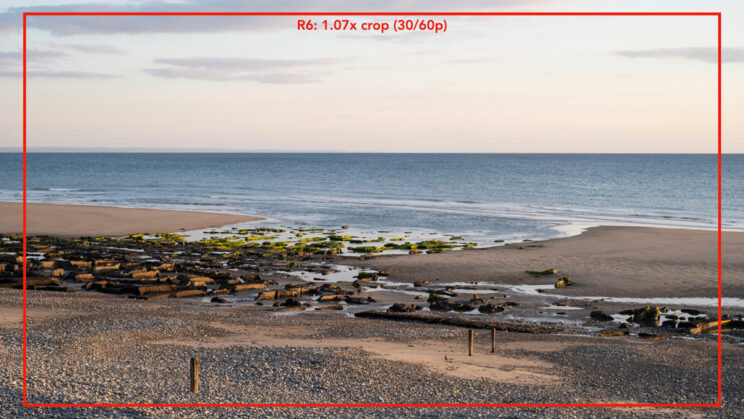
In Full HD, the R6 renders slightly better details than the mark II model. With the High Speed mode, the new camera can record at 180p, whereas its predecessor stops at 120p. This means 7.5x versus 5x slow motion effect on a 24p timeline. Additionally, the R6 II doesn’t have the 7 min / clip limit found on the R6. The quality of the footage remains the same on both cameras when working with the high speed mode.
The R6 II doesn’t have the 30 minute per clip limitation when recording video. I can hear your question already: what about overheating? That has been the Achille’s heel of the original R6. Despite various firmware updates that tried to tackle the issue, we found the camera to be unreliable after 45 minutes of 4K 25p recording. It shuts down, then you can only record a small amount before it needs to cool again. As you can imagine, it’s worse with 4K 50p.
Canon has listened and learned from its mistakes. The EOS R6 Mark II comes with an improved circuit design that manages heat more efficiently. I was able to record 2 hours and 15 minutes in 4K 25p, and one hour and a half in 4K 50p. In both situations the recording stopped because the battery died, not because the camera overheated.
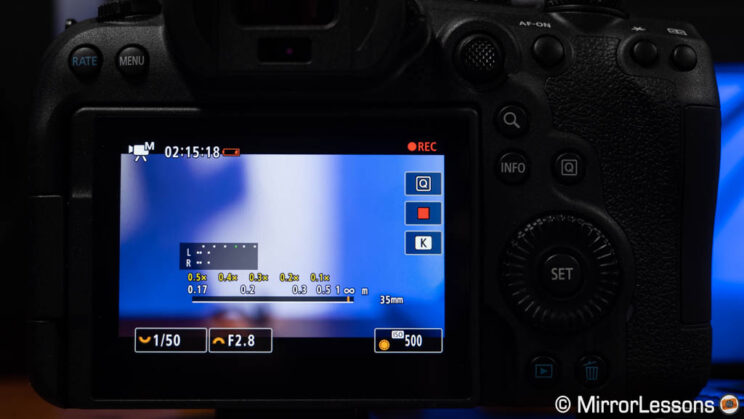
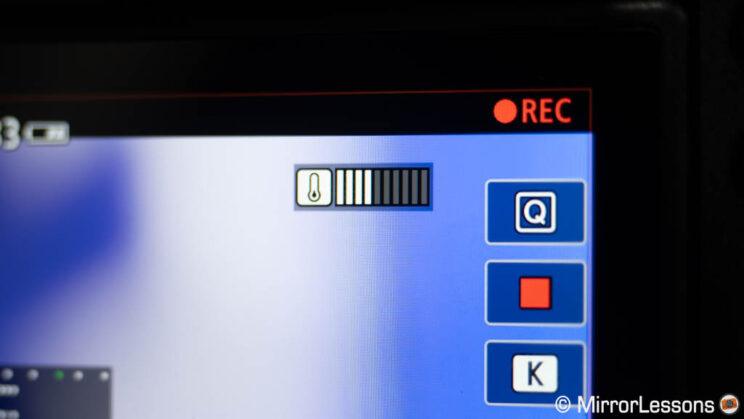
Concerning colours and profiles, the same difference I described in the first chapter is also valid for video.
Both cameras feature HDR PQ and the Canon Log3. These work in 10-bit 4:2:2 (H.265) and are available to record internally. Dynamic range is pretty much the same with both models set on C.Log3. The R6 also features the C.Log profile, which has a base ISO of 400 rather than 800. It produces a darker exposure, and if you try to match the same brightness as C.Log3, you will lose data in the highlights.
The new camera can output 6K Prores RAW video via the HDMI port to the Atomos Ninja V and V+ recorder. When activated, the camera only records with the C.Log3 profile. Note that a firmware update is required on the Atomos device, and should be released in mid 2023. Check the Atomos website to find out more.
The ISO range is a bit different for video than for stills: 100 to 25,600 with the normal range, up to 204,800 with the extended range.
Here as well, there are no relevant differences worth highlighting. The R6 II produces slightly more noise, but it’s a very small difference compared to its predecessor. The Noise Reduction setting allows you to reduce the amount of noise, but you will lose some details if set to High. I find Low or Standard to be a good compromise.
Rolling shutter is more contained on the R6 II, and in both cases you can reduce distortion when recording at 50/60p.
The Canon EOS R6 II has a few extra features, including a pre-recording mode that lets you save 3 to 5 seconds before you hit record.
7. Autofocus
Both cameras use Canon’s Dual Pixel CMOS AF II in combination with deep learning algorithm and subject tracking. The maximum number of points, as well as the sensor coverage, differ when you use the Auto Selection modes or the single point.
AF areas
Auto selection
1-point AF
R6
1,053
(100% Coverage)
6,072
(100% H, 90% V)
R6 II
1,053
(100% Coverage)
4,897
(100% H, 90% V)
The R6 II has received improvements concerning the software. Specifically, the new camera has a greater understanding of the human body, and can track the head or torso better when the face is hidden.
The range of different subjects recognised has increased too: now the R6 II can detect airplanes and trains. As for animals, it can track horses and zebras in addition to dogs, cats and birds. What’s more, an Auto setting is available so that you don’t have to manually switch from one subject to another when working in a mixed environment.
Subject Det.
R6
R6 II
Humans
Eyes
Head
Torso
Eyes
Head
Torso
(improved)
Animals
Dogs
Cats
Birds
Dogs
Cats
Birds
Horses
Zebras
Vehicles
Cars
Motorcycles
(helmet priority)
Cars
Motorcycles
(helmet priority)
Trains
Airplanes
The settings related to AF area and Subject Tracking have also being re-organised. On the original R6, the list of AF areas include a Tracking area, where the AF works across the entire sensor, and that is your only option to enable subject detection. The latter is not available if you use the 1-point AF or the Large Zone AF for example.
On the R6 II, you can enable subject tracking with any AF area, and there is a new setting to prioritise the left or right eye when using a setting smaller than Whole area AF.
Note that when using the Tracking area on the R6, prioritising the left or right eye is still possible, by simply moving the AF joystick in either direction (the same method works on the R6 II when using Whole Area AF).
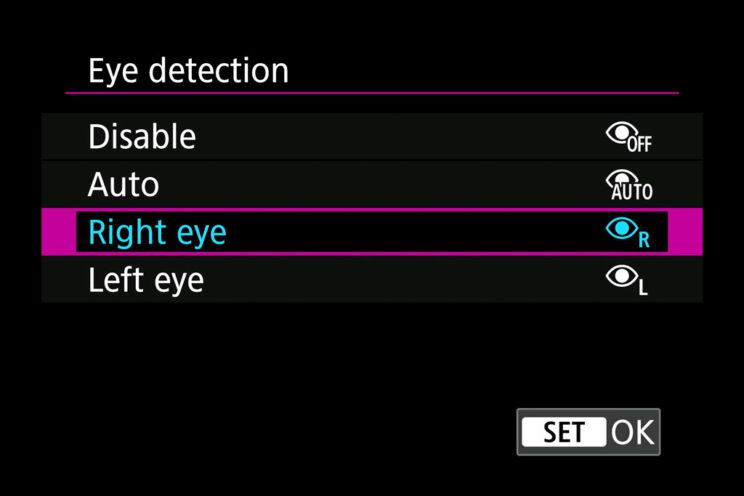
Let’s have a look at some results now. First, my Face and Eye detection test in good light conditions, indoors. The subject walked towards the camera, then backwards, and then came back while rotating on herself. The latter is interesting as it allows us to see how the two cameras behave when the face is not visible. I use the RF 85mm F2, which may not have the fastest motor, but is an affordable portrait lens and a good match for these two cameras.
The R6 and R6 II gave me the same performance. The keeper rate on the mark II model was slightly higher (86% vs 85%) but such a small difference has little importance. They both struggled a bit when the person walked away from the camera, and when she turned on herself the second time. That said, they both kept the AF on the head when the face was not visible, rather than switching somewhere else. The results on the R6 have been consistent since the first time I tested it in 2020.
The same test with 4K video shows the R6 as being slightly slower when the subject walks towards the camera at the beginning, but the R6 is also a bit more reactive than the R6 II when she turns. This is an interesting finding because, while the difference is smaller in the end, the new camera and the supposedly better understanding of the human body didn’t make an impact here.
A similar test done in low light (this time with the subject just walking towards the camera) shows the R6 II has an advantage, despite both cameras having the same rating of -6.5EV (with a F1.2 lens).
The R6 II delivered a keeper rate of 85%, basically the same as before, whereas the R6 mk1 dropped to 70%. Both cameras were equally capable of tracking the subject when she was in complete darkness, but the R6 delivered a higher number of shots with inaccurate focus.
In video mode, the R6 lost the subject for a few seconds when she was in the dark, whereas the R6 II managed to track better all the way to the end.
So the real advantage with the new camera seems to be in low light, not because it has a better sensitivity rating, but probably because the improved algorithm is more effective when the subject is less visible.
I had the chance to use the R6 II for a concert, where the light and atmosphere changed constantly. It performed admirably, even when the subject was not facing the camera directly.
Next, we can talk about my birds in flight test. The R6 has been an excellent performer since firmware 1.0, and has always delivered a constant keeper rate of 93% (I tested the cameras multiple times, with different firmwares and lenses).
The R6 II delivered the same result, but with the added benefit of shooting at twice the frame rate, which is no small feat.
Both cameras do really well at detecting the subject and tracking right away, whether the bird appears big or small inside the frame. They are very quick to correct focus, and rarely mis-focus on the background.
Here is the AF score for the two cameras, and how they compare with other products.
A1
98%
100%
A9 II
96%
99%
R3
94%
100%
A7 IV
94%
100%
R6 II
93%
99%
R6
93%
97%
R5
90%
99%
Green means only sharp images are taken into account, blue also includes slightly soft results. Read more about my birds in flight test (and see how 30+ more cameras rank).
Note: the table above represents the best score for the autofocus. But some of these cameras have a faster drive speed than others, with the most clear difference being between the A7 IV (10fps) and the R6 II (40fps). A disparity of 1% is nothing, so there is no doubt that the Canon is the most interesting camera in this case.
8. Breathing Compensation and Other Features
It’s not uncommon to see new features introduced by one brand being “copied” by another. One example is Breathing Compensation, a function Sony launched with the A7 IV to correct the change in field of view that occurs with photography lenses when going from the minimum to the maximum focus distance (something that does not happen to cinema lenses).
Canon has brought a new function to the R6 II that does the same thing. Note that only a restricted selection of lenses are compatible for now, and they need a firmware update. The lenses are:
- RF 14-35mm F4 L IS USM
- RF 15-35mm F2.8 L IS USM
- RF 24-70mm F2.8 L IS USM
- RF 70-200mm F2.8 L IS USM
- RF 70-200mm F4 L IS USM
- RF 24mm F1.8 Macro IS STM (this one doesn’t need a firmware update, it’s already compatible)
Unfortunately, I didn’t have any of these lenses at my disposal, so I couldn’t try this new feature. I hope Canon will release more firmware to include more lenses.
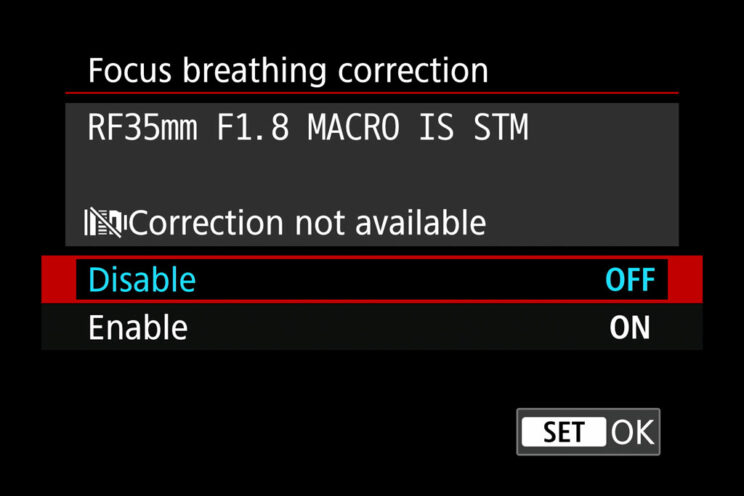
There are other features Canon has put inside the R6 II. Here is a brief list:
- Shutter speed up to 1/16,000s when using the electronic shutter (R6 is 1/8000s).
- False colour warning to indicate your exposure levels on screen
- Dual Pixel RAW mode, which allows you to correct the focus point or change the bokeh in small increments after taking the shot (using Canon’s proprietary software)
- Focus Stacking in-camera
- High-Frequency flicker mode to eliminate banding caused by LED lights
- Detection only for Subject Detect. AF: in video mode, you can tell the camera not to focus on the background when your subject leaves the frame.
The Dual Pixel RAW mode was first introduced on the Canon 5D mark IV DSLR. When enabled, the camera records a larger RAW file that contains the depth information gathered from the phase detection AF system. Them, with the Canon Digital Photo Professional software, you can make small (very small actually!) adjustments to the focus point, as well as the bokeh.
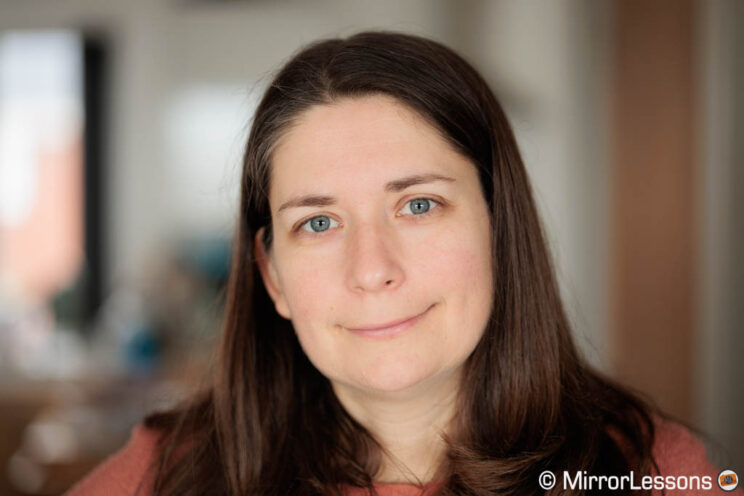
RF85mm F2 MACRO IS STM
Focus Bracketing is available on both cameras, but Focus Stacking (Depth Composite in the menu) is an option only available on the R6 II. It can work really well if you carefully select the number of images to take, as well as a small focus increment. The camera will also save the individual frames in the card, if you prefer to use a third party software on your computer. Note that this mode uses the electronic shutter and is not compatible with flashes.

RF85mm F2 MACRO IS STM
40 frames – Focus increments: 1
The HF (High Frequency) Anti-Flicker mode works for the electronic shutter, unlike the basic anti-flicker mode that only works when using the mechanical shutter. The HF is useful to synchronise the shutter with lights that operate between 50Hz and 2011 Hz.
You can adjust the setting manually to a much higher degree of precision, and what’s cool is that the R6 II also has an automatic option where it can detect the correct frequency by itself, and then set the optimal shutter speed. In the example below, it found 1/64.2s as the best exposure time to use, and the flickering was gone.
9. Image Stabilisation
Despite sharing the same technology and rating (maximum 8 stops), I found a small difference in performance between the two cameras when it comes to image stabilisation for still photography.
My test consisted of capturing 10 images at different shutter speeds to see how many of them are sharp (visible details without motion blur). I used the RF 24-105mm F4 IS, so there was IBIS on the sensor and optical stabilisation on the lens working together.
The original R6 managed to give me two decent results with a 4s exposure hand-held, and delivered a slightly higher keeper rate throughout. It’s not a mind-blowing difference, just an extra piece of information to share really.
Stabilisation Test (RF 24-105mm F4 at 35mm)
Shutter Speed
R6
R6 II
4s
20%
0%
2s
30%
10%
1s
40%
30%
1/2s
70%
60%
1/4s
90%
80%
1/8s
100%
90%
1/15s
100%
100%
For video, the performance is more equal. When walking with the camera, the results are far from perfect, but jerks and sudden movements are not too abrupt (obviously, the way you move will influence the result).
There are some warp distortions when using a short focal length (24mm or lower), which are especially visible in the corners. This is a known limitation of sensor stabilisation. You can enable Digital IS (electronic stabilisation) to reduce the effect. The standard level does a decent job without cropping your image too much. The Enhanced level is more stable but also introduces more motion blur and the result is less pleasant. Digital IS can also help to make a static shot more stable.
10. Price
The EOS R6 II was launched at $2500, £2800 or €2900.
The original R6 remains in the market, and is starting to be discounted in some countries. At the time of writing, it can be found for $2300, £1900 or €2500.
Things the R6 and R6 II have in common
Before wrapping up this comparison, a quick overview of a few things these two full frame cameras have in common that I didn’t include in previous chapters:
- 3.69M dots OLED viewfinder with 0.76x, 120fps and 23mm eyepoint
- Touch sensitive LCD monitor (3.0-in, 1.62 dots, multi-angle)
- Dual SD card slots (UHS-II)
The viewfinder is good overall: it’s bright, clear, and you can select a fast refresh rate of 120Hz. The magnification is decent, and I find both cameras easy to use when wearing glasses.
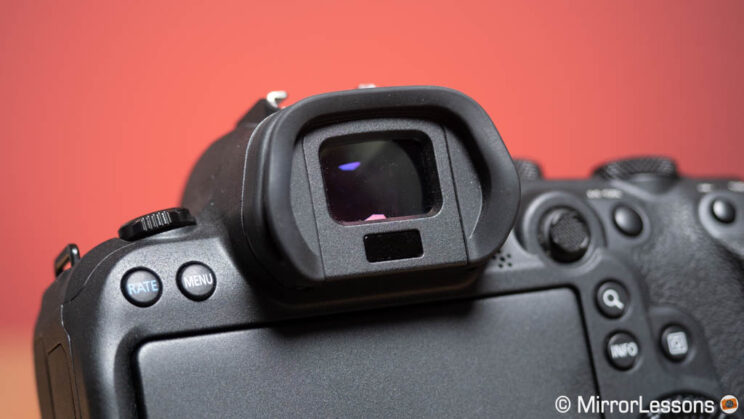
Note that on the R6 mark II, there is an extra setting called OVF sim. view assist, which gives you a more natural view without the effect of the picture style or exposure in real time. That said, the OLED panel used on the R6 II is not the same HDR panel found on the R3, so this option doesn’t give you the same impressive results as the flagship camera.
The rear LCD monitors are what you should expect: good resolution, multi-angle mechanism which is useful in various situation, and excellent touch sensitivity that also allows you to navigate the menu and change settings.
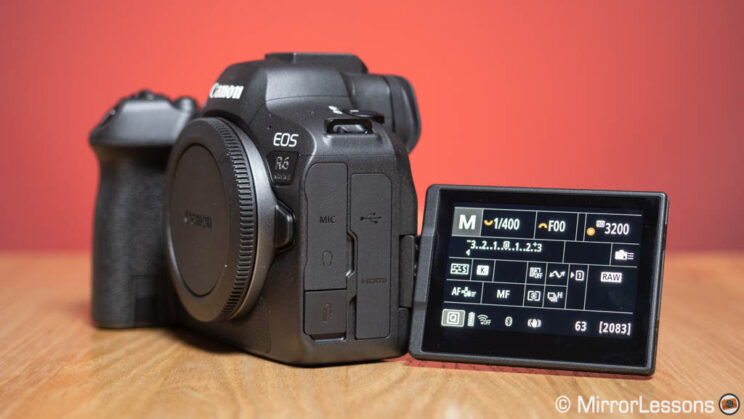
The two card slots can be accessed on the side, in their dedicated compartment. You have the usual options of backing up your photos, separate RAW and JPGs, or record video on two cards simultaneously.
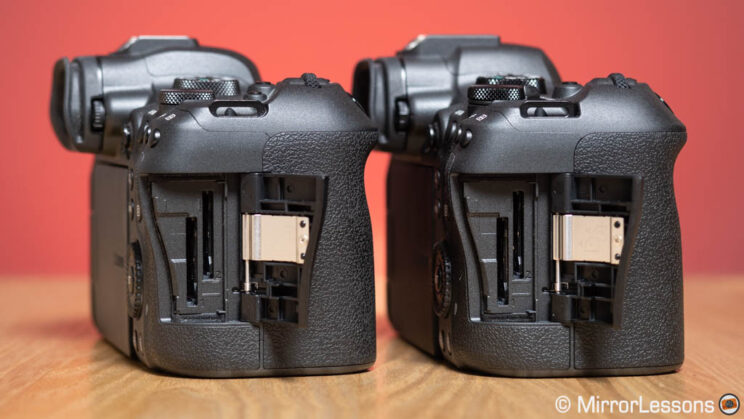
Video Review
Final Thoughts and Conclusion
At first, the improvements brought to the R6 mark II may not seem too important, but after using the camera for nearly three weeks, I’m confident to say the new model has been refined in such a matter that it gets quite close to perfection.
There are small yet useful improvements, like having a dedicated switch for the movie mode, which allows you to use the custom modes when recording videos, and not just when taking photos. Extra features such as the HF Anti-Flicker can be a godsend in specific situations, whereas others such as Focus Stacking can become that extra tool you learn to appreciate quickly. All this to say that the R6 II is a more complete camera.
The new 24MP sensor doesn’t bring a substantial improvement when it comes to dynamic range or high ISO, but you get those 4 extra megapixels if you feel 20MP is a bit too low. The readout speed is also faster, so using the electronic shutter will result in less distortion with fast movements.
The autofocus has gained a few extra settings and is more advanced when it comes to subject tracking. The latter may not always make a difference, but I found the R6 II to be better in low light, to the point of being as reliable as it is in good light situations.
Finally, we have video, which is probably the most important improvement, mainly because you don’t have the annoying issue with overheating anymore, and rolling shutter is also more contained, just like with still photos. Add the extra connectivity options and excellent image stabilisation, and there isn’t a lot left to criticise.
Two negative things about the R6 mark 2 I can point out are A) the buffer is more limited, and B) it is more expensive.
With all that said, and while acknowledging the R6 II is the better camera, there is more than one reason to stick with the original model. It remains very capable in a lot of key areas such as image quality and autofocus, as this article demonstrated. As always, it depends where your priorities lie.
Reminder: the links below are affiliate links. If you decided to buy something after clicking the link, we will receive a small commission.

